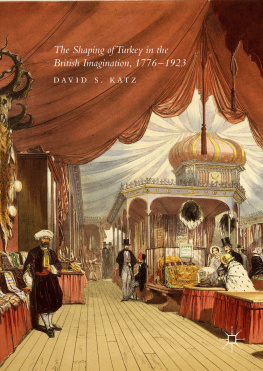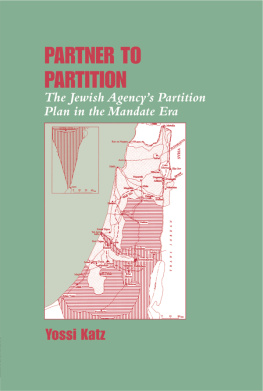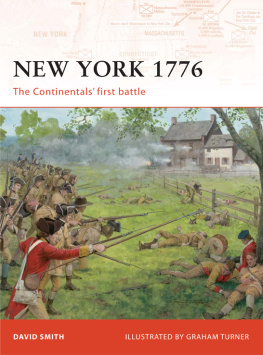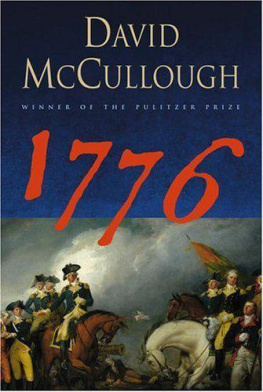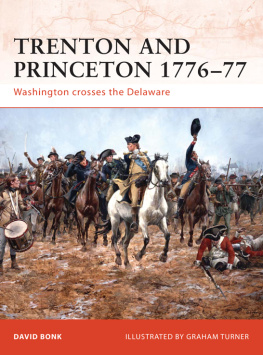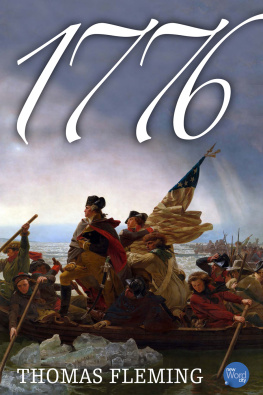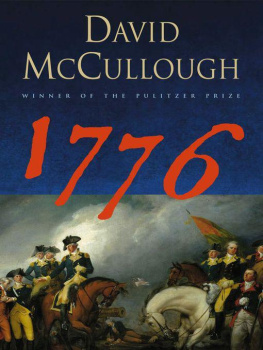1. Introduction: Bag and Baggage
On 18 December 1916, President Woodrow Wilson of the United States sent a formal diplomatic communication to all nations involved in the conflict that would become known as World War I, asking for their views on what the future peace might look like. Since the United States was still considering if and when it would enter the war, the answer to Wilsons question was of the highest importance. The Allied governments replied on 11 January 1917: The Entente objects of the war are well known, they insisted, and went on to list the points that the civilized world knows that they imply. Among these were the enfranchisement of populations subject to the bloody tyranny of the Turks and the expulsion from Europe of the Ottoman Empire, decidedly alien to Western civilization. The civilized world of the Allies was the European world, based upon cultural foundations that rested on the soil of Rome, and, beneath that, the bedrock of ancient Greece. The Osmanl Turks, the Ottoman descendants of Erturul and his son, the eponymous Osman Gazi, were invaders who had swept down from somewhere out in central Asia and whose presence had caused nothing but trouble for real Europeans during the past six hundred years. The Ottoman decision to tie their fate to that of the Germans was only further evidence for the Allies of inherent Turkish barbarity. The defeat and surrender of the Ottoman Empire, and the occupation of Istanbul by the Allies in November 1918, offered an opportunity to redraw the map of Europe, partly by restoring some of the shattered glory of Greece and the Byzantine world. With the support of the British government and the approval of the Allies, Greek forces landed at Smryna on 15 May 1919 and proceeded to gobble up large segments of western Anatolia. Not only was the Ottoman Empire to be expelled from Europe; so too were the progeny of Osman to be driven away from the Mediterranean shores where the civilized world was born. By 9 September 1922, this Allied delusion was in ruins, as the last Greek soldiers clambered on board their ships from the same port city of Smyrna and returned home in utter defeat. A little more than a year later, on 29 October 1923, Mustafa Kemal (Atatrk) (18811938) declared the establishment of the Turkish Republic.
When the Allies in 1917 called for the expulsion from Europe of the Ottoman Empire they were simultaneously affirming that Turkey was at that time a part of Europe. When Turkey in 1959 made its first application to become part of the European Economic Community, Ankara was really saying that it wanted to be readmitted to Europe. The debate over the renewed inclusion of Turkey in the European Union has been fierce at times, conducted not only at the level of rational discourse, but also against the historical and emotional background of how the Ottoman Empire has been perceived in the West.
This is a book about some of the principal writings that shaped the perception of Turkey for informed readers in Britain, from Edward Gibbons positing of imperial Decline and Fall to the proclamation of the Turkish Republic, illustrating how Turkey has always been a part of the modern British and European experience. Many people have written about Turkey and the Ottoman Empire. But the five celebrated authors discussed here were especially influential in shaping the image of Turkey, helping to balance the philhellenic prejudice that was the natural result of an educational programme based on the study of classical literature. No doubt there were other writers who might have been included, but certainly these five authors have a compelling claim to be among the shapers. These works were enormously influential in that their audience was the political nation, people whose views mattered in Britain, where decisions were taken in that period that had an enormous effect on the modern Near and Middle East. Strictly in terms of political history, the final scenes of the movement for Turkish independence were played out against the background of British strategic and conceptual blundering, so this study is more than an adventure up blind alleys, but rather the re-creation of a vanished mental landscape on which the modern Turkish Republic was built and the present map of Europe was drawn.
This is a study in the history of ideas, specifically the image of Turkey in the mind of what literary critic Stanley Fish called the informed or at-home reader in England who lived (and read) in the long nineteenth century. Fishs work promoted among English speakers the approach of reader-response criticism and reception theory that had developed in Germany following upon the inaugural lecture of Hans Robert Jauss (19211997) in April 1967 at the University of Constance, subsequently soon published. Jauss believed in a dialogical and at once process-like relationship between work, audience, and new work and proclaimed an aesthetics of reception [ Rezeptionssthetik ] and influence. He insisted that we need to be aware of the historical sequence of literary works since we read texts one after another and are therefore inevitably influenced in our reading by what we have read before:
A corresponding process of the continuous establishing and altering of horizons also determines the relationship of the individual text to the succession of texts that form the genre. The new text evokes for the reader (listener) the horizon of expectations and rules familiar from earlier texts, which are then varied, corrected, altered, or even just reproduced.
To the notion of a horizon of expectations approached by each reader when confronted with a new text, Stanley Fish added the idea of interpretive communities which are made up of those who share interpretative strategies not for reading (in the conventional sense) but for writing texts. Like Jauss, Fish believed that these strategies exist prior to the act of reading and therefore determine the shape of what is read rather than, as is usually assumed, the other way around. The strategies are constantly changing as we approach and crest each succeeding horizon of expectations.
Edward Said argued that, for Europeans and Americans, the Orient was a textual universe, that is, less a place than a topos , a set of references, a congeries of characteristics, that seems to have its origin in a quotation, or a fragment of a text, or a citation from someones work on the Orient, or some bit of previous imagining, or an amalgam of all these. No doubt this was true for most people, who had never travelled to Istanbul and parts east and south and formed their views of the (Middle) East from print. But not everything written about that part of the world relied on caricature and borrowed knowledge. There were many writers who went to these places or studied them dispassionately with a mental horizon of expectations which yielded readily when transversed, replaced with images based on what was actually before their eyes. But Said was certainly correct in insisting that ideas (and ideologies) do indeed have real effects, something often forgotten when historians become overwhelmed with material explanations for past events.
Some of the writers discussed here achieved everlasting glory, such as Edward Gibbon (17371794). Despite the title, the final three of the six volumes of his Decline and Fall of the Roman Empire (17761788) actually deal with Asia Minor and the Ottomans and are therefore seldom read or studied today, but they were essential texts at the end of the eighteenth century and long afterwards. Gibbons tomes were important for another reason: they established in the public mind the trope of decline and fall. Gibbon was not the first to speak in those terms, and there were other writers who chose to contemplate the paradox of great empires declining and falling. But every informed reader in Britain read Gibbon (or at least dipped into his massive volumes) and he set the framework for understanding imperial decay, a model which shaped the way Turkish history was perceived from the late eighteenth century until our own times.

